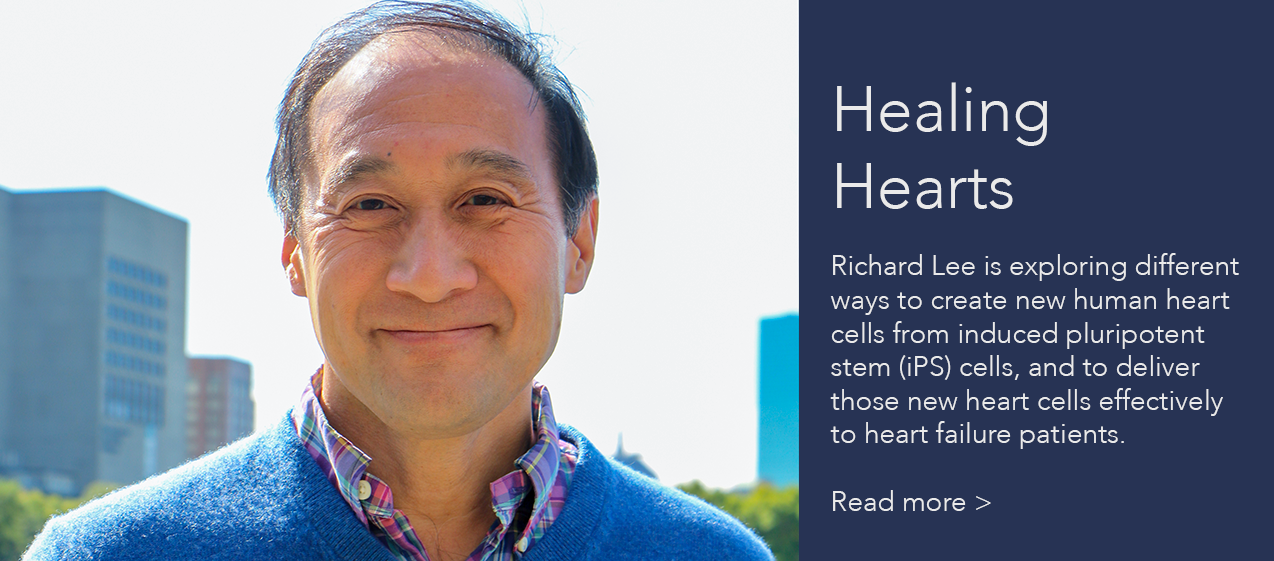The HSCI Cardiovascular Program aims to generate new human heart cells that can replace damaged heart tissue.
The heart was long assumed to have little ability to regenerate on its own. In recent years, many research groups, including several in HSCI, have developed approaches to generating new human heart cells. Our challenge is to develop practical ways to harness this ability to create new human heart cells and turn it into an effective therapy for patients.
 Read an update on our Cardiovascular Disease Program in the story Healing Hearts.
Read an update on our Cardiovascular Disease Program in the story Healing Hearts.
What we investigate:
- How can we generate mature heart cells to treat patients?
- Why can some organisms regenerate their hearts, but others — like humans — cannot regenerate heart tissue?
- What is the best approach to delivering new heart cells to patients with heart failure?
What we have achieved so far:
HSCI Cardiovascular Program researchers have:
- Discovered GDF-11, a blood-borne factor in young mice that can reverse some features of heart aging.
- Purified a master stem cell, and applied it to an engineered, thin-film cardiac strip for both transplantation and testing purposes.
- Created disease-specific cell lines with iPS cells from patients with different cardiac conditions to study the diseases and search for new treatments.
- Developed a new method for studying birth of cells in humans.
- Showed that exercise has a rejuvenating effect on heart tissue.

